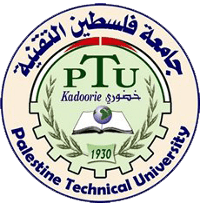Please use this identifier to cite or link to this item:
https://scholar.ptuk.edu.ps/handle/123456789/88 cc-by
| Title: | Evaluation of taste, total phenols and antioxidant for fresh, roasted, shade dried and boiled leaves of edible Arum palaestinum Bioss |
| Authors: | Qneibi, Mohammad Jaradat, Nidal Zaid,Abed Naser Abu-Khalaf, Nawaf Natsheh, Abdel-Razzak Hussen, Fatima Mohammed |
| Keywords: | Antioxidant activity; antioxidants;multivariate data analysis; chemometrics; electronic tongue; ET; medicine; Pattern recognition; PCA; phenolic content; plant; principal component analysis; taste; chemical sensors;taste; |
| Issue Date: | 2018 |
| Publisher: | Marmara Pharmaceutical Journal |
| Citation: | Qneibi, M., Jaradat, N., Zaid, A. N., Abu-Khalaf, N., Natsheh, A. R., & Hussen, F. (2018). evaluation of taste, total phenols and antioxidant for fresh, roasted, shade dried and boiled leaves of edible Arum palaestinum Bioss. Marmara Pharmaceutical Journal, 22(1). |
| Abstract: | Arum palaestinum is one of the famous wild plants that have been used since the ancient time in the Palestinian folk food and medicine. However, it needs particular cooking steps to decrease its numbing taste. We investigated the impact of cooking, measures on taste, total phenols and antioxidant activity of wild A. palaestinum by using an Alpha-Astree Electronic tongue (ET), which is used for food taste assessment. In this study, the A. palaestinum was cooked in different ways. We used Folin Ciocalteu"s process to compare total phenols, where radical scavenging assay was used to evaluate the antioxidant activity using 2, 2-diphenyl- 1-picrylhydrazyl-hydrate (DPPH). Our results showed that a very significant discrimination of the samples with different distances between groups (p-values < 0.001) in the ET results coupled with the principal component analysis (PCA). The samples were in the following order in term of numbing taste: Fresh > dried > cooked. Moreover, the pattern discrimination index between (A and C), (B and C) and (A and B) were 88%, 96.36%, and 98%, respectively, which suggests that C and A are the most similar preparations in term of taste, while B is the worst one. Our results reveal that the cooking and dried A. palaestinum showed a lower numbing taste by ET, while the antioxidant activities showed a marked correlation with the total phenolic contents. As a result, we concluded that the oven dried preparing method (home roasting) for A. palaestinum is the most efficient method for consumption or preparing bioactive supplements for nutraceutical and pharmaceutical supplements. |
| URI: | https://scholar.ptuk.edu.ps/handle/123456789/88 |
| Appears in Collections: | Sciences and Agricultural Technology Faculty |
Files in This Item:
| File | Description | Size | Format | |
|---|---|---|---|---|
| Evaluation of taste total phenols and antioxidant.pdf | 647.77 kB | Adobe PDF |  View/Open |
Items in DSpace are protected by copyright, with all rights reserved, unless otherwise indicated.
